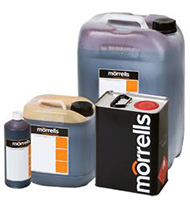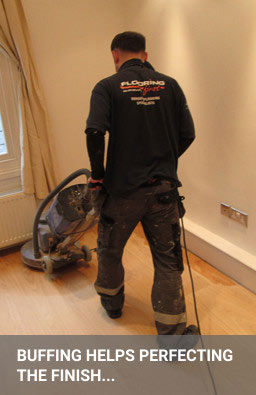Back to Floor Sanding
Wood Floor Sanding Advice For Stain Application

Do you desire a beautiful and smooth wooden floor that showcases its natural character and feel? Consider enhancing its appearance by applying a stain, such as a whitewash, grey, or dark chocolate shade, to create a striking contrast with your white leather sofa and light furniture. Proper wood floor sanding is essential for achieving optimal results and should be performed carefully and professionally.
There are two primary methods for staining wood floors. The first involves using a wood dye, also known as a stain, which is a coloured substance suspended in a solvent that penetrates the wood, enhancing its natural grain and colour. The second method utilises pigmented finishes, which combine the protective qualities of a regular finish with the colouring effects of the dye. This dual approach not only provides colour but also adds a layer of durability, ensuring that your floors remain beautiful and well-protected against wear and tear.
Sanding and Staining
Stains possess a unique characteristic that can be both an advantage and a disadvantage, depending on your perspective. They tend to highlight small imperfections or damaged areas in the wood grain, making them more noticeable. Therefore, applying a stain is advisable only if the floor has undergone professional treatment and is perfectly smooth.
As you may know, wood floor sanding consists of three stages: rough, medium, and fine sanding. The care and precision with which you handle the fine sanding and subsequent buffing significantly influence the final appearance of the stain. For a quality finish, it's crucial to use a belt sander instead of a cheaper drum sander, as the latter is clumsier and offers less control over the sanding process.
Once medium sanding is complete, it is recommended to fill the gaps between the boards. While this step isn’t mandatory, it can greatly enhance the overall appearance of the stained wood. After all, achieving a visually appealing floor is a primary goal!
The type of abrasive you should use for the final sanding depends on the type of wood flooring you have. For instance, pine can burn if sanded with a grit finer than P80, while oak typically performs better with a P100 grit. It's essential to gauge how much sanding your specific wood can tolerate, and this knowledge is best acquired through personal experience and practice.

Buffing a Wooden Floor
Buffing is a crucial process that involves using a finishing sander, such as a random orbital sander or a dedicated buffing machine, to achieve a smooth and even surface on your wooden floor. While this step is technically skippable, it is highly recommended - as mentioned earlier, stains can accentuate any flaws in the wood grain. It's all or nothing—why settle for less when you can achieve a flawless finish?
It is essential to vacuum the floor thoroughly between each sanding pass especially after buffing is completed. Sawdust has abrasive properties and can scratch the wood surface if not removed. Ensuring a clean floor before stain application is critical for achieving the desired finish.
For optimal results, we strongly recommend using professional buffing equipment, such as the Lagler Trio or Bona FlexiSand. These machines are designed to provide exceptional performance and are particularly effective for buffing parquet flooring. Our experience with these tools has consistently yielded impressive results, ensuring a beautifully finished floor that enhances the overall aesthetic of your space.
Staining Like an Expert
Applying a wood stain to your floor may seem straightforward, but achieving professional results requires attention to detail and careful preparation. You’ll need a quality stain, a bucket for mixing, a brush, and a decorator rag. It's also advisable to use a dust mask to protect yourself from fumes and a pair of latex gloves to keep your hands clean.
With your freshly sanded floor ready for staining, it's time to start. Begin by equipping yourself with gloves and a mask. Shake the cans of stain thoroughly to ensure an even color and pour the contents into a clean bucket. Once you start applying the stain, it's crucial to complete the job in one continuous session. If any mistakes are made, spot repairs are not possible—you will need to re-sand and start over.
Begin in one corner of the room and work along the edges consistently, following the direction of the wood grain with each brush stroke. This will help maintain an even colour and prevent streaking. Any excess stain should be wiped off promptly with the rag to avoid blotches or unevenness in the finish. Be mindful of your movements to avoid painting yourself into a corner or leaving footprints on your freshly stained floor. While the process may require you to work quickly, it is not physically demanding. Focus on maintaining a steady hand and precise technique for a flawless result.
For optimal results, it's worth practising on a small, inconspicuous area first to get a feel for how the stain absorbs into your particular wood species. This can help you gauge the right amount of stain to apply and refine your technique before tackling the entire floor.
Few Useful Floor Staining Tips
Applying stain to your wooden floor can transform its appearance, but a poorly executed job can make the surface look patchy, uneven, or even dirty. Before you begin, consider these essential tips to ensure a professional finish:
-
Understand Wood Characteristics: Different types of wood absorb stains differently. For example, maple has a tight, close-pored cellular structure, which makes it difficult to stain evenly. Lighter stains, such as grey and whitewash, can be influenced by the wood’s natural colour, resulting in unexpected hues. Don’t rely solely on samples; the best way to gauge the final appearance is to have a professional demonstrate the stain on your freshly sanded floor.
-
Preparation is Key: You cannot apply a stain over an existing finish. The old finish must be completely removed before staining can begin. This ensures the stain penetrates the wood evenly, producing a consistent colour.
-
Enhance the Final Look: Although not mandatory, gap filling and buffing can significantly improve the appearance of your floor. Gap filling prevents dark lines between planks, and buffing creates a smooth, uniform surface that allows the stain to be applied evenly.
-
Plan for Coverage: Always purchase more stain than you think you’ll need. Running out of stain midway through the job can lead to visible differences in colour and sheen if you try to resume the work later. If you can’t complete the project in one go, you may need to re-sand and re-stain the entire floor, resulting in unnecessary time, expense, and effort.
-
Avoid Interruptions: Ensure that the workspace is free from interruptions before you begin staining. Staining requires consistent application and must be completed quickly to achieve a flawless finish. Any delays can result in visible lines or unevenness where the stain has dried differently.
-
Handle Drips and Spills Carefully: Don’t panic if you encounter splashes or drips while staining, but act quickly to wipe them away. Allowing stains to sit too long can lead to dark spots or streaks that are difficult to correct. Work systematically and make sure the stain is evenly distributed across the entire surface.
-
Test on a Small Area First: If you are unsure about how the stain will look on your floor, test it on a small, inconspicuous area first. This will give you a better idea of the final result and allow you to adjust your technique if needed.
By keeping these tips in mind, you’ll be better equipped to achieve a beautiful, professionally stained wooden floor that enhances the character and ambience of your space.